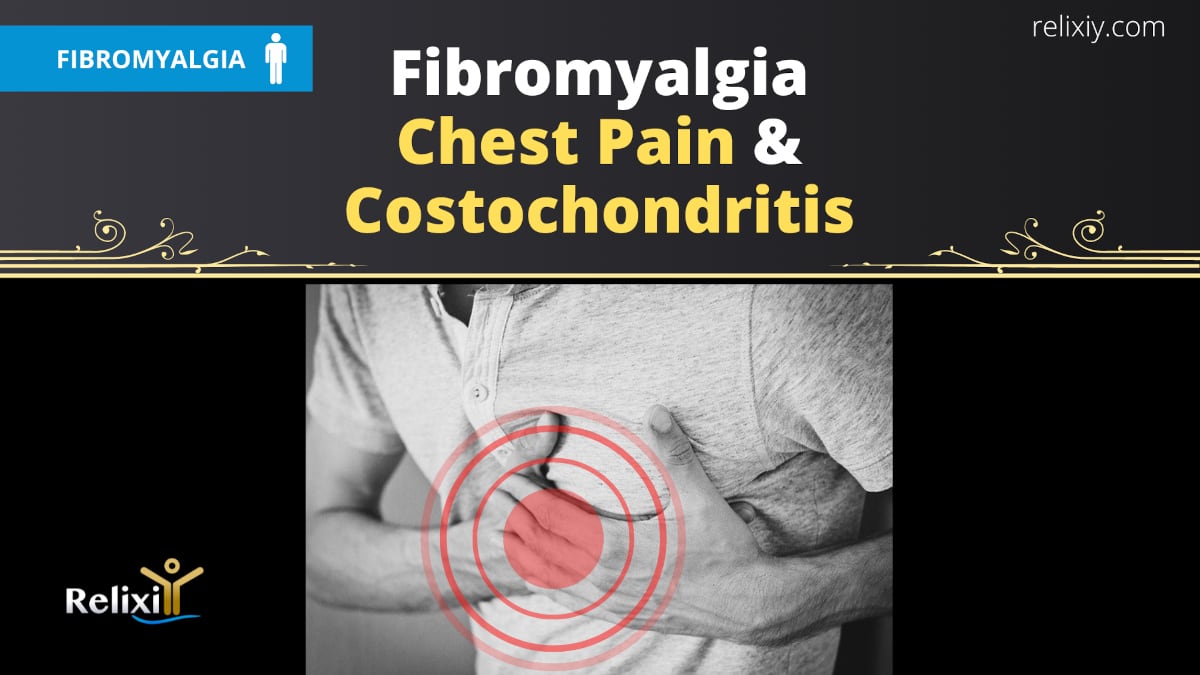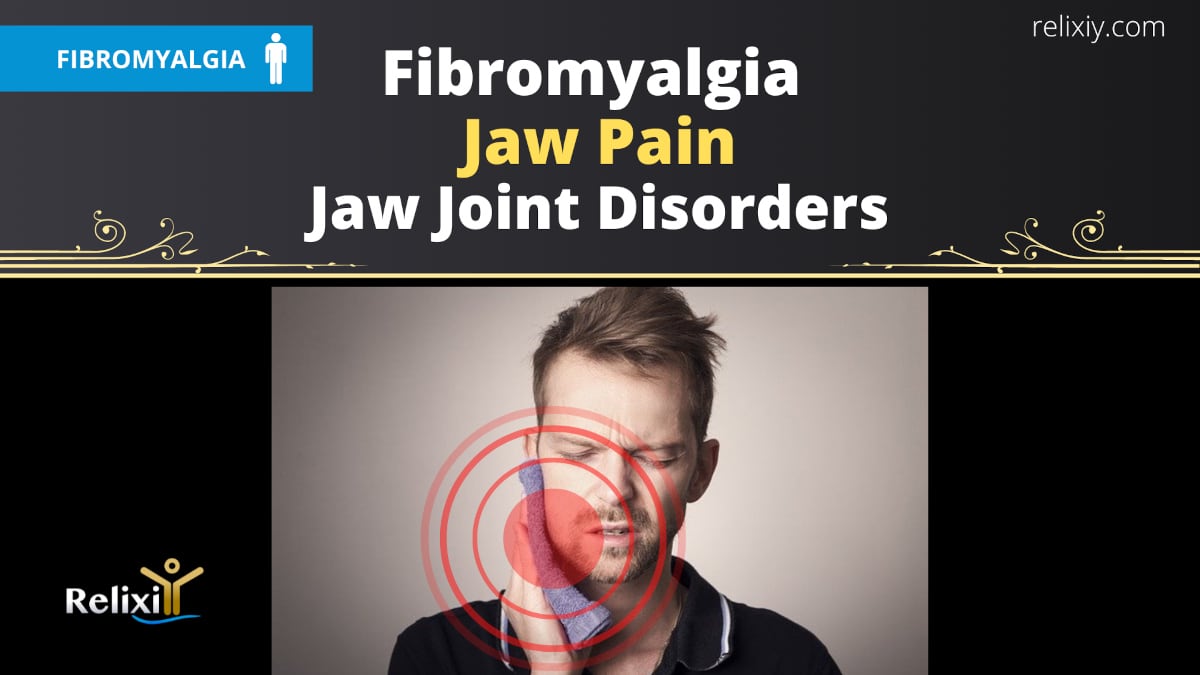Are you suffering from fibromyalgia chest pain? Can chest pain be caused by fibromyalgia or by some other condition like costochondritis? What are the differences between costochondritis and fibromyalgia?
Although fibromyalgia on its own can certainly cause chest pain, costochondritis is another condition that can cause similar pain. So, what do costochondritis and fibromyalgia have in common? Can you have costochondritis and fibromyalgia at the same time? How can you ease the chest pain caused by them?
While chest pain is one of the types of fibromyalgia pain, please note that it can be very difficult to tell what the difference is between chest pain caused by fibromyalgia or other conditions and a much more serious problem such as a heart attack. If you are experiencing sudden chest pain and you think there is any possibility it may be a heart attack, you should seek medical attention immediately.
What Are Costochondritis and Fibromyalgia?
Costochondritis is the inflammation of the cartilage that attaches the ribs to the breastbone, which causes tenderness and chest pain in that area. The pain often gets worse when you breathe in deeply, cough, are doing exercise or when something is pressing down on your chest.
It is not completely understood why this condition develops, and for many people, it will seem to have no clear cause, but it could be caused by injuries and trauma to the chest, by infections such as respiratory infections, or by physical strain, such as from exercise. Costochondritis is noncardiac chest pain, which means it is not related to the heart.
Costochondritis can also be easily confused with a very similar but much rarer condition known as Tietze’s Syndrome, which causes swelling of the chest as well as pain.
Fibromyalgia is a chronic condition that causes pain all over the body and high sensitivity to pain, as well as other symptoms such as extreme fatigue, sleep difficulties and problems with memory and concentration. For many people, the widespread pain of fibromyalgia can also spread to the chest and cause severe pain in that area, which can be very alarming.
You would be glad to know that there are also a number of known remedies for fibro pain relief, including the use of weighted blankets for fibromyalgia. Weighted blankets can help manage fibromyalgia symptoms, including insomnia, anxiety, stress, and chronic pain.
The Connections Between Costochondritis and Fibromyalgia chest pain
So, what are the similarities and differences between fibromyalgia chest pain and costochondritis? To begin with, the chest pains experienced with both conditions can feel very similar to one another. Similar to fibromyalgia, costochondritis can cause tenderness in the affected area, and the pain can feel sharp and stabbing, burning, or achy. For this reason, it can be very difficult to tell the difference between the two, and many people with fibromyalgia who experience chest pain may actually have costochondritis without realising it.
However, one important difference is that costochondritis is an inflammatory condition, while fibromyalgia is not and causes no damage to the body. Another important difference between the two is that fibromyalgia causes chronic, long-term pain, while costochondritis is a relatively short-term problem, usually going away in a few weeks or months, though it is possible for it to get worse again even after that. Still, if the symptoms do not improve, it may be more likely that there is another problem involved, such as fibromyalgia.
Although most cases of costochondritis are mild, if someone with fibromyalgia does develop the condition, one way that fibromyalgia may have an effect is by causing the chest pain to be much harder to deal with than normal. This is because one of the main symptoms of fibromyalgia is that it makes your pain threshold much lower.
We should note that the pain threshold is not the same as pain tolerance. Pain tolerance is how well a person can deal with pain, whereas their pain threshold is the point at which something starts being painful, and how painful it is. People with fibromyalgia can feel pain from things that would not be painful to other people and can feel more severe pain from things that would usually not hurt that much.
So, this means that if you do indeed have fibromyalgia and costochondritis at the same time, the lower pain threshold caused by fibromyalgia may cause an otherwise mild case of costochondritis to be much more painful and seem more serious.
Treating Costochondritis and Fibromyalgia Chest Pain
Costochondritis is thankfully not usually a serious problem and will get better on its own, though this can take anywhere from a few weeks to a few months. Treatment usually involves:
- Taking medication such as painkillers or for more severe cases an injection of more powerful medication into the affected area (If you are already taking medication for fibromyalgia symptoms, you should ask your doctor for information about using both at the same time).
- Make sure to avoid any movements and activities that could aggravate the problem and cause more pain, such as exercise or stretching that strains the chest area.
Additionally, whether your chest pain is being caused by costochondritis or fibromyalgia, a way to help ease it is by applying heat to the painful area, such as with a hot pack or a heated-up cloth. Some people may also find applying cold objects like ice packs to be just as helpful, so you should see what works best for you.
Conclusion
Costochondritis is not a serious health problem, and with time and proper treatment it should improve quickly, but when combined with fibromyalgia, chest pain can become more confusing and severe. Even so, with a proper diagnosis and good treatment and care, it should hopefully still be resolved within a short time.
Please keep in mind that there are many other possible causes of chest pain, and if you are experiencing chest pain and the cause of it is unexplained, you should get in touch with your doctor so that you can be sure of what is causing it and receive treatment. Even if you do not think it is an urgent problem, chest pain can still be a sign of a more serious condition, so it is better to be safe than sorry.





